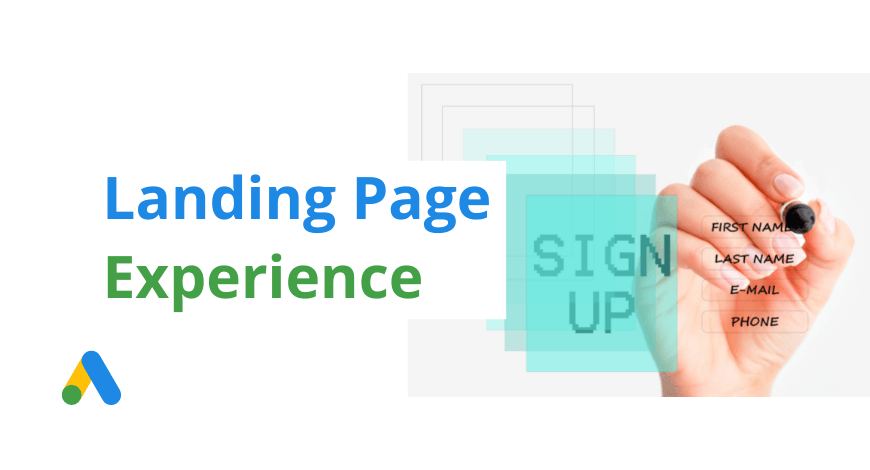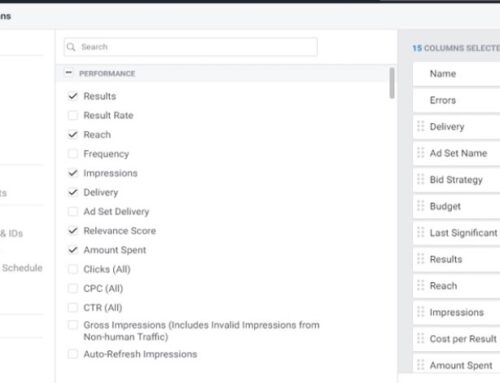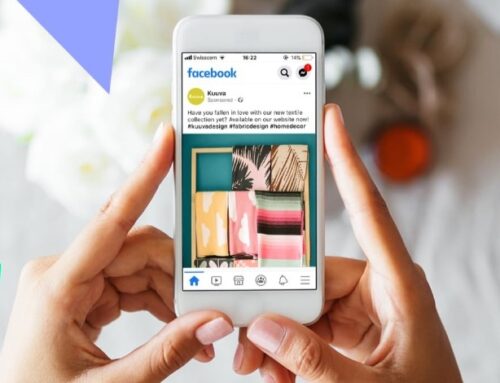Landing page and your quality score
Your Google Ads quality score is an average score given to your keywords based on 3 criteria. Expected clickthrough rate (CTR): The likelihood that your ad will be clicked when shown. Ad relevance: How closely your ad matches the intent behind a user’s search. Landing page experience: How relevant and useful your landing page is to people who click your ad.
In this post, we will dissect your landing page experience and explain it further in-depth. Most of us are able to improve on our ads by selecting the right keywords and pairing them up with a suitable ad copy.
The landing page seems to catch most advertisers off-guard as they do not know what to do or how to start optimizing for page experience. But landing page experience is still one of the three criteria for achieving a high QS. So if you see your landing page is rated ‘below-average’, you know that some work needs to be done on your website.
There are 3 scores you can get for landing page experience.
- Above average
- Average
- Below average
If you see above average, you are doing good as it is the best possible score Google can give for this criteria. There is usually no need to optimize your page any further. However, if you see ‘Average’ or ‘Below average’ – this means that more work can be done. I recommend always starting with the below-average scores to have the most impact on your campaigns.

This is OK.

This means that you need to work on your landing page experience.
Here are 5 pointers for optimizing your landing page experience.
5 steps to a good landing page experience
Relevance and usefulness of your landing page
Give people what they’re looking for. If someone searches for “flannel shirts” and clicks your ad for “flannel shirts,” the landing page they go to should feature your flannel inventory. Essentially, try to make your ad to landing page 1:1 as much as possible. That is why having a thematically related ad group is so crucial – the entire ad group is sending users to a single landing page. If you have many random, unrelated keywords in your ad group, you will give users a bad landing page experience because they have different search intent. Google will then penalize your ad with a low Quality Score.
Create consistency from ad to landing page
Keep messaging consistent from ad to landing page. Make sure the page follows through on the ad’s offer or call to action. Even if you have no control over your site, you can still experiment to find the most useful existing pages. This point is similar to the first point: keeping the landing page useful and relevant to users. The only way to do this is to create consistency in your ads.
What you offer in your ads should be presented on the proceeding landing page as well. Users first click on your ad because they are interested in finding out more, so reflect your ad copy inside your landing page.
Look at conversion rates
Try using conversion rate as a proxy for a good landing page experience. It doesn’t impact your landing page status, but it can be a good way for you to measure and optimize. If your landing page has a low conversion rate, it can only mean that somewhere along the line, the user is not finding what they want. In essence, the string from ad to sale is broken. Of course, it may not be unusual for landing pages to have a low conversion rate. This really depends on what you require the user to do. A small lead-form is easier to complete than an e-commerce checkout. A $50 product is easier to sell than a $2,000 product.
The point is this; if you see meager conversion rates, your landing page experience is probably terrible. This is a sign that you need to start optimizing your pages with the techniques laid out in this post.
It has to be mobile-friendly
We currently live in a mobile-first world. If your website does not load properly on mobile, you have very little reason to spend money running any online ads. Make your website mobile-friendly first. Hire a web developer if required. Ease of navigation is something users value even more on mobile websites. You can use the Mobile-Friendly Test to see how well your landing page works on mobile devices. We carry our mobiles everywhere now, so expect to see most of your website traffic coming from mobile sites. (except for a few niches and B2B verticals)
Look to significantly improve your site loading speed
The speed at which your page loads can be the difference between someone bouncing or buying, and also having a good or bad page experience. There is a lot of data out there that have proved that a slow loading page gives users a negative experience and directly affects conversion rates and overall page success.
This is where you can make changes. First, if you are using shared hosting, look into a VPS or dedicated server. This will increase your website reliability and efficiency since you are no longer sharing resources with many other websites. Next, look to lighten up your site. A heavy site takes longer to render and load. As this is not a blog about website optimization techniques, nor do I claim to be an expert in that field, I will briefly cover the methods of “lightening” your site to improve page load times.
- Removing unnecessary plugins and themes on your site.
- Minifying CSS, HTML, and JavaScript Scripts.
- Enabling Gzip Compression
- Optimizing Images. Use jpeg instead of png.
- Splitting Long Content into Pages.
- Enabling Caching, it is one of the best web optimization techniques to speed up websites.
- Using a CDN.
These are the broad overview level tips. Lightening up your website and upgrading to a dedicated or private server will help to boost your site loading speed and retain a high landing page experience for your customers.
Summary
When pages boast quick load times and high levels of relevance, they are likely to earn a higher Quality Score. This means that you will end up with a higher Ad Rank and better conversion rates on your website.
Keep in mind; you should not over-optimize your ads by sending every user single to their dedicated landing page. The word-for-word phrase from a search term doesn’t need to be on your landing page.
As Google has said, “A search for “South Chicago Chihuahua-friendly budget hotels” doesn’t need to lead to a landing page with the headline “South Chicago Chihuahua-friendly budget hotels.” Instead, focus on creating great experiences that deliver what the user is looking for.”





